IoMT Devices Overview
The Internet of Things has transformed various industry sectors – healthcare being one of them. The Internet of Medical Things (IoMT), also referred to as IoT in healthcare, is the network of Internet-connected medical devices, hardware infrastructure, and software applications and plays a crucial role in increasing the precision, consistency, and throughput of electronic devices, monitoring day-to-day health records and analyzing patient data, facilitating Remote Patient Monitoring and synergizing the use of various smart devices available to the patient with intelligent medical technologies. This technology generally reduces the costs associated with medical examinations and gives medical healthcare professionals a better understanding of the patient’s condition.
Furthermore, the combination of blockchain with the Internet of Medical Things has enabled a decentralized method of managing the rapidly expanding number of IoMT devices.
Their combination provides certain benefits, such as allowing accurate, reliable, and rapid data distribution, secure medical records without creating a performance bottleneck and a single point of failure, family members can view the specifics of their patient condition, and patients can access and control their data, all patients in the patient network easily see any changes made on the blockchain, enabling peer-to-peer connections between devices through decentralized communications, any unlawful modification is easily detectable. Major players which are working on this technology are Boston Scientific Corporation, GE Healthcare, Philips, Siemens Healthineers, Cisco, IBM, Biotronik, Culinda, Intel, and many more.
IoMT Infrastructure
In the healthcare industry, IoMT enables wireless and remote medical equipment to safely connect over the Internet, enabling quick and flexible analysis of medical data.
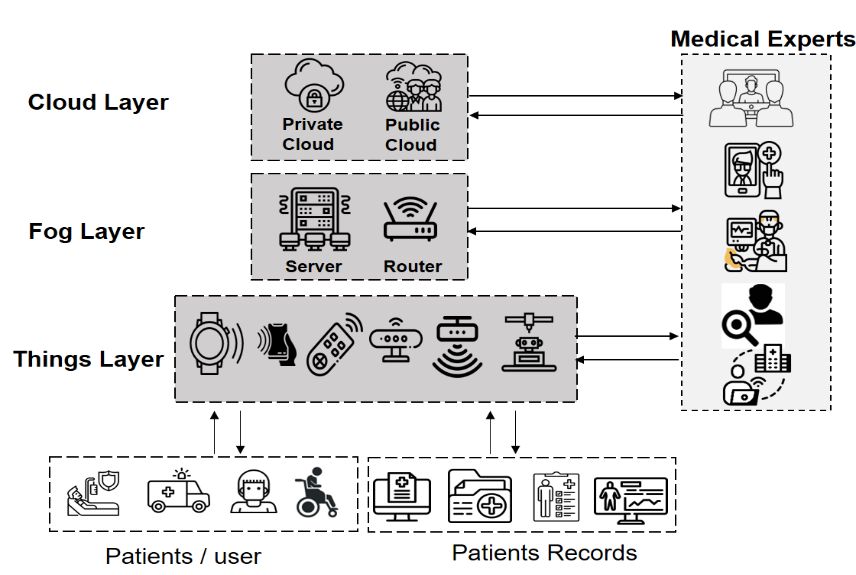
The IoMT architecture consists of three layers: the things layer, the fog layer, and the cloud layer. To reduce the delay, the healthcare experts get the patient data of all these layers at every stage through the router.
Discussion of Each Layer: IoMT Devices
- The things layer consists of patient monitoring devices, sensors, actuators, medical records, pharmacy controls, nutrition regimen generators, etc. Moreover, this layer is directly in contact with the users of the ecosystem.
- The data from elements such as wearables, patient-monitoring data, and remote care data is collected at this layer, and these components are securely installed to maintain the integrity of the data acquired.
- The data is further processed in the fog and the cloud layer to produce useful information.
- The healthcare experts get the patient data through this router to reduce the delay.
- The router connects the thing layer, the fog layer, and the local processing servers at the fog layer.
- The fog layer consists of local servers and gateway devices for a sparsely distributed fog networking framework.
- The bottom layer devices use the available computing power to provide consumers with real-time responses.
- The servers monitor and manage the system’s security and integrity.
- For further processing, the server data will be forwarded to the cloud layer by the gateway devices.
- The cloud layer consists of data storage and computation resources for the data to be analyzed and derive decision-making systems
- The cloud offers a vast reach that incorporates massive medical and healthcare systems. Moreover, it allows them to conduct daily operations.
- This layer’s cloud resources will store the data generated by the medical infrastructure. Also, analytical work will be done as needed in the future.
- This layer’s cloud resources will store the data generated by the medical infrastructure, and analytical work will be performed as needed in the future.
Challenges and Solutions: IoMT Devices
The IoMT devices encounter challenges when communicating with cloud-hosted medical data storage and processing systems, including privacy and security concerns, interoperability issues, data fragmentation, lack of traceable and universally available proof of trust for all cloud participants, inconsistent trust evaluation results, limited adaptability, centralized nature, inaccuracy, and significant management overhead.
All challenges are solved using blockchain technology. Detailed solutions for some challenges are:
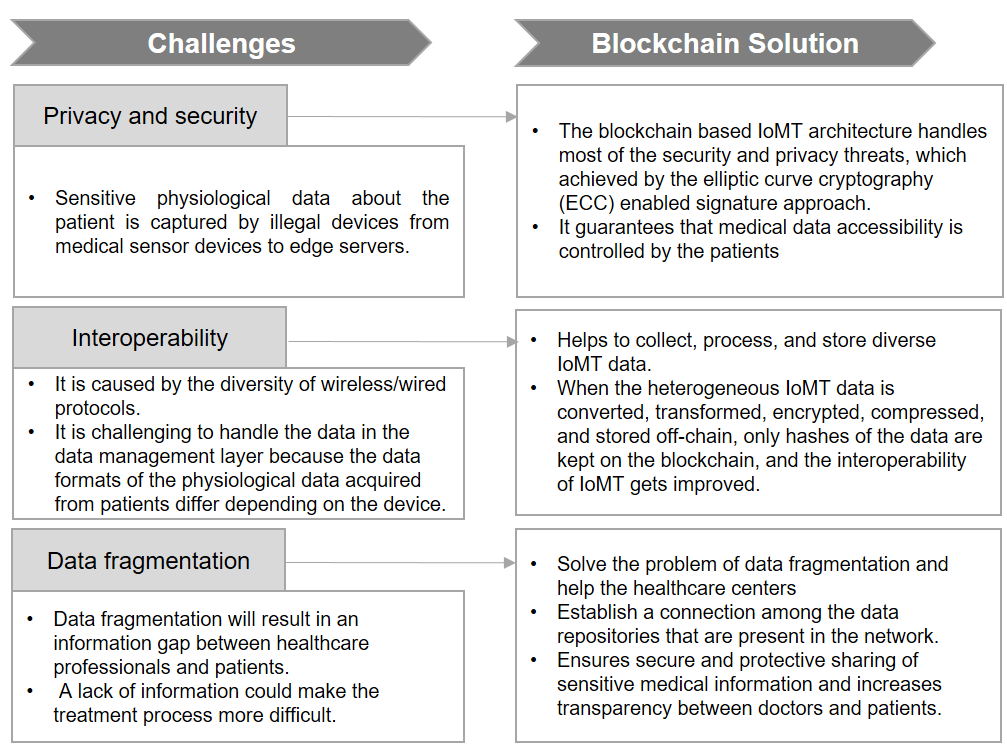
Blockchain in IoMT Devices Infrastructure
The IoMT blockchain-based architecture serves as a solution for safely transferring patient health reports to protect medical data. Moreover, participants connect computers to create a virtually incorruptible chain of cryptographically connected blocks where critical patient-related data is stored.
Steps Defining Blockchain Working in the Domain:
- The doctor is virtually present in a distant place, monitoring the patient’s actions and providing advice using a blockchain-based system
- In some clinics, real-time statistical reports are generated, shared on the distributed ledger, and analyzed by the health provider
- Wearable devices sense the changes happening in the patient body. So, it sends real-time data to the doctor.
- Wearable devices are embedded with sensors. Thus, they can observe the patient at any time and send valuable data to medical practitioners over IoMT devices.
- The doctor then advises the patient according to the condition. Also, caretakers of the patient can also view the patient’s history.
- Every node of the patient network shares and views the reports and treatment of the patient on the distributed ledger
- The diagnostic lab assistant adds electronic medical reports (EMRs) to the blockchain because he is a part of the IoMT network.
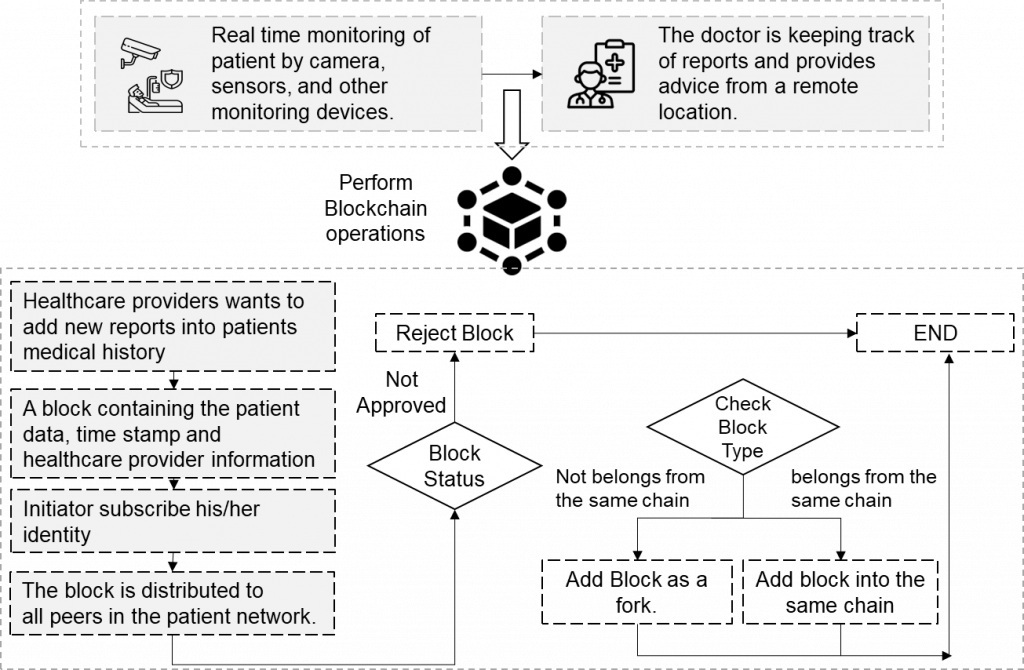
- Creating a new patient record initiates a new block of data in the patient network
- Miners are special nodes in the network. These nodes have to perform some work called mining to add a transaction to the network.
- A miner who reaches the exact solution broadcasts the created block into the network. The block’s approval is based on the proportion of the mining data.
- All peers in the patient network distribute the block. Once the majority of the peers approve the new block, they insert it into the chain.
- If this block does not match the previous block, a fork is generated in the chain, and the block is defined as an orphan in the chain
- The new block is not matched with the previous one and does not belong to the same chain
- Altering the subsequent block is necessary to remove or modify a data block after adding it to the chain
- Detecting anyone attempting to change the data can be done easily
- Viewing patients’ history in a highly authenticated manner with no fear of any alteration is possible
Innovation Areas
Below are some of the innovation areas related to blockchain in IoMT:
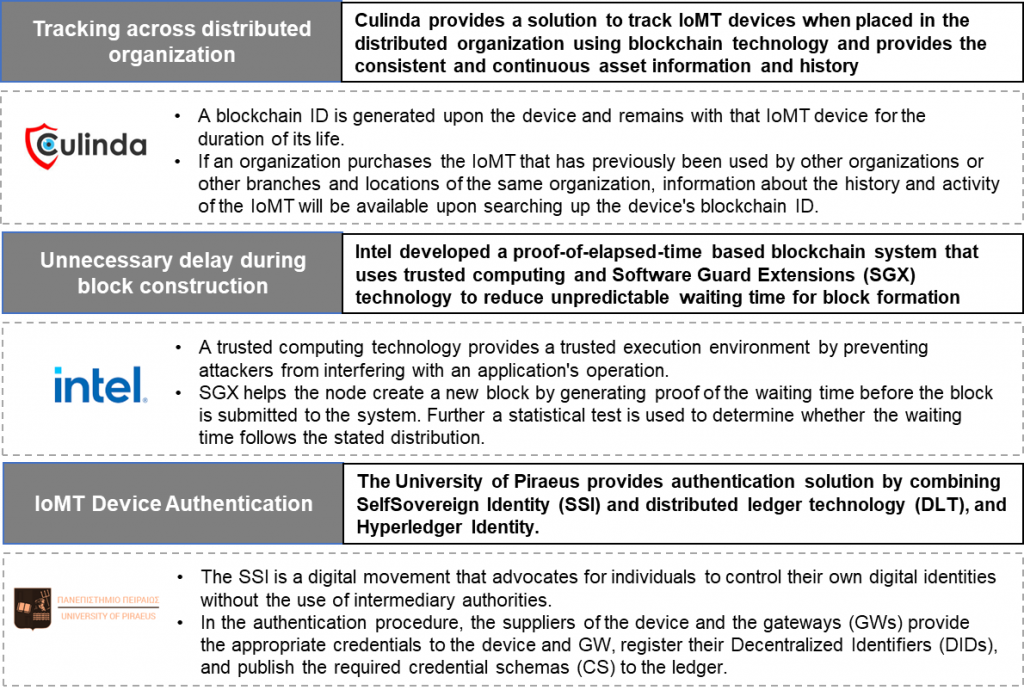
IP Trends
The following section describes the IP analysis in the blockchain in IoMT. Also, the first chart represents the patents’ priority filing trend, where the maximum patent was filed in 2020. Additionally, based on this analysis, the second chart represents a comparison of the geographical distribution of 2019-2020, where China filed the maximum number of patents. The third chart represents the overall worldwide distribution of top assignees.
1.) Patent filing trends

2.) Country-Wise Patent Filing
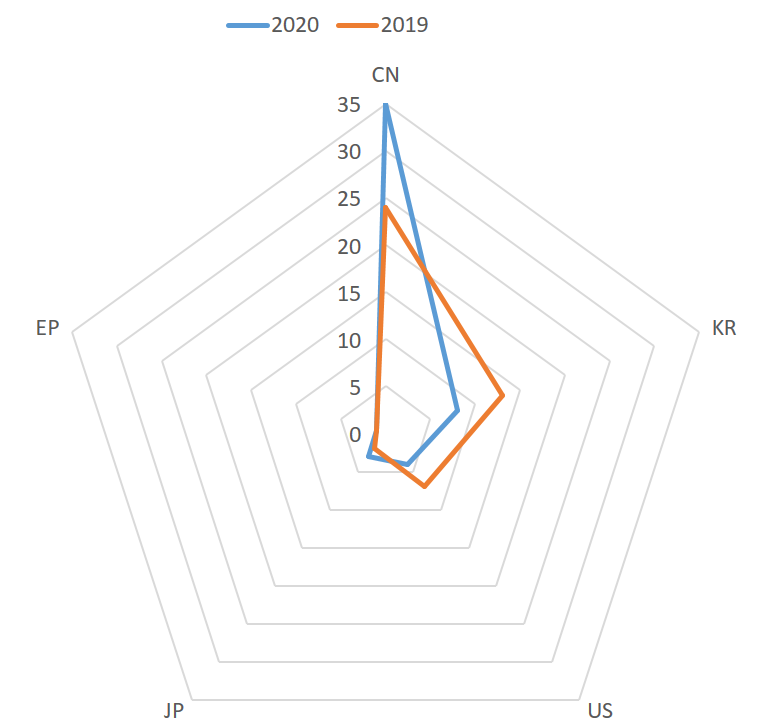
3.) Top Assignees
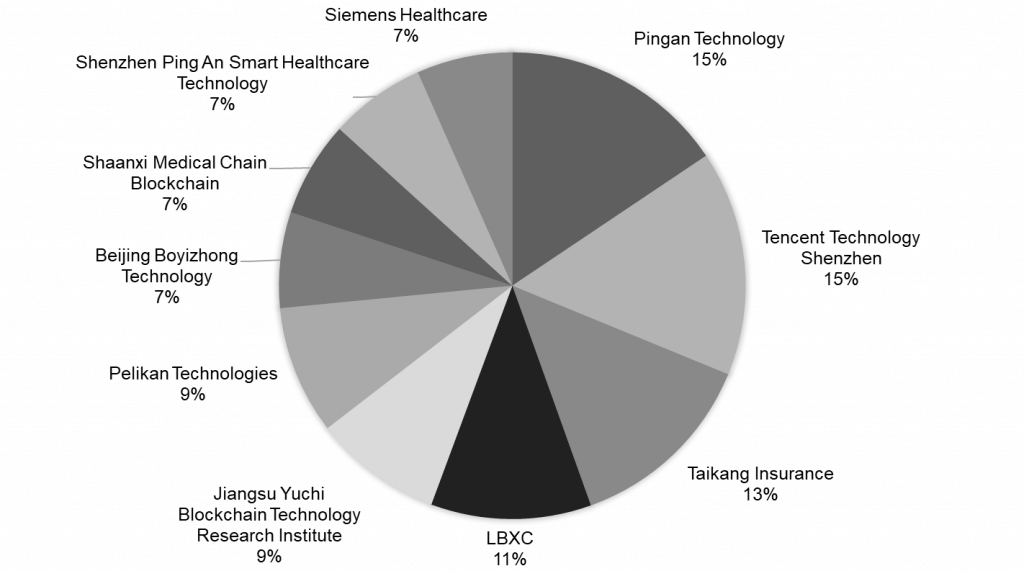
Conclusion
The medical devices industry is going through a revolutionary change. Some organizations and researchers are working to address some unresolved problems with blockchain-enabled IoMT, such as resource constraints, which prevent widespread adoption of Blockchain architecture due to storage and computation capacity limitations, and Governance Problems, which arise in the sensitive healthcare industry because the blockchain’s legal regulations must explicitly define the nodes, users, peers, and validators. Additionally, companies will work to improve the blockchain-based consensus process to overcome future IoMT-based difficulties.